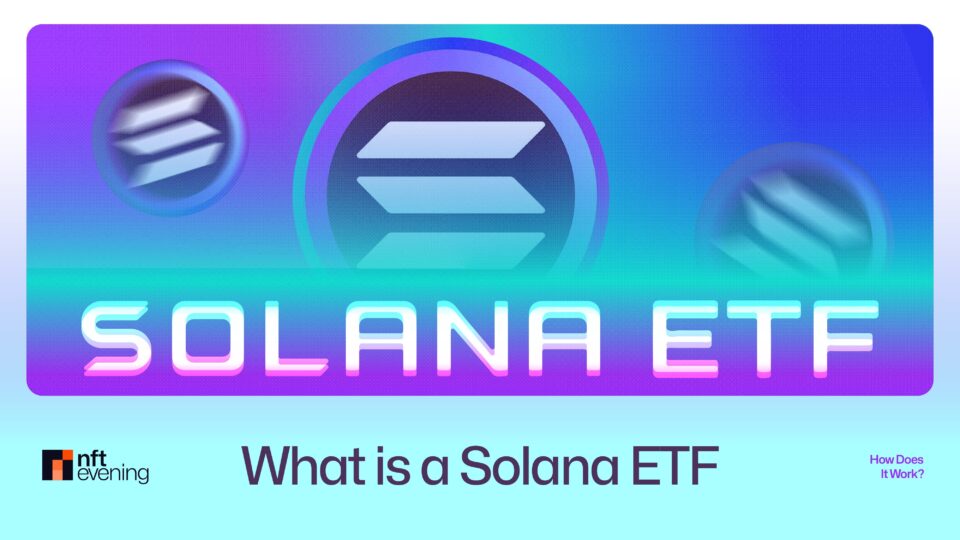Cryptocurrencies have gained significant popularity over the past few years. Nonetheless, for most investors, the process of buying and selling cryptocurrency can be tedious and fraught with challenges. Instead of enhancing adoption, this discouraged some, especially potential institutional investors, from joining the cryptocurrency market.
This guide will explore Solana ETFs, their potential benefits, risks, and opportunities for investors..
What Is Solana ETF?
Exchange-traded funds (ETFs) are investment funds traded on stock exchanges. They hold a collection of assets, such as stocks or cryptocurrencies, and are designed to track the performance of specific assets. ETFs enable investors to purchase shares in the fund, providing them with exposure to the underlying asset without requiring direct ownership.
A SOL ETF is an investment fund that allows investors to track the price of the Solana (SOL) cryptocurrency. Investors can participate in the cryptocurrency’s price movement, but without buying the digital asset itself. When you buy a Solana ETF, you gain exposure to Solana within a familiar investment environment, such as a brokerage account.
Types of Solana ETFs
There are two types of Solana ETFs: Solana spot ETF and Solana futures ETF.
Solana spot ETF: These exchange-traded funds hold the actual Solana (SOL) token, and they mirror the cryptocurrency’s real-time price movement. This ETF aims to closely track the price of SOL, providing investors with direct exposure without requiring them to own the cryptocurrency. There are types of Solana spot ETFs that may offer access to Solana staking ETF rewards, thereby enhancing returns.
Solana Futures ETFs: Rather than holding the underlying cryptocurrency, these exchange-traded funds enable users to invest in futures contracts. Investors attempt to gain returns by speculating on the future price of SOL. Participants will not own the actual SOL token. They hold contracts that represent their right to buy or sell SOL at a pre-determined date in the future.
How Do Solana ETFs Work?
Below is a step-by-step explanation of how a Solana spot ETF works:
Creation of the ETF
- Issuer: The issuer is typically a financial institution, such as a bank or Investment Company, or any other financial entity that creates the SOL ETF.
- Acquiring SOL: The issuer buys SOL tokens or any other financial tools, like futures contracts representing SOL, to back the exchange-traded fund.
Fund Structure
- Fund Setup: The issuer holds SOL tokens and sets up the ETF fund. The value of the ETF will be directly linked to the actual market value of SOL or the futures contract tracking SOL.
- Share Creation: The issuer creates ETF shares, with every share representing a portion of the asset the fund holds.
- Exchange Listing: The ETF is then listed on a stock exchange, allowing investors to buy or sell shares of the exchange-traded fund similar to ordinary stocks.
Trading the ETF
Participants can purchase shares of the SOL ETF via certified brokerages, specifying the number of shares they need. Those who already own Solana ETF shares can also sell them through brokerage accounts at the trending market price.
The ETF issuer will be responsible for managing the fund to ensure it keeps the correct amount of SOL. The issuer also charges a management fee paid annually, which is primarily a small percentage of the assets to cover the costs associated with running the ETF.
When Will Solana ETF Be Approved?
The highly anticipated approval date for the Solana ETF in the United States occurred on July 2, 2025. The groundbreaking achievement that incorporates the Solana staking ETF has finally overcome hurdles with the US Securities and Exchange Commission (SEC). The REX-Osprey Fund’s application initially faced an objection from the SEC in May, even after clearing the initial registration.
The issue at hand was whether the proposed ETF was qualified as an investment company under the existing securities laws. REX-Osprey finally managed to resolve the issue by allocating 40% of its assets to other ETPs in the US. The approval of the Solana staking ETF marks a significant milestone for crypto and traditional finance products. The move potentially opens doors for ETH staking under companies like BlackRock.
Impact of Solana ETF Approval on SOL Price
News about the launch of the first-ever SOL ETF sparked a brief 7% price surge for SOL, the native token of the Solana network. The news prompted investors to speculate whether the ETF with staking capabilities could spur institutional demand and push the price to $200. The SOL price first rallied to $161 before finally adjusting to $157. The SOL ETF issuer, Rex Shares, partnered with Osprey Funds to beat the typical SEC approval process.



